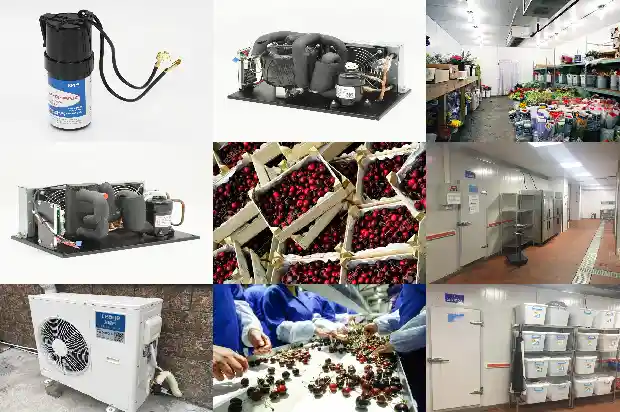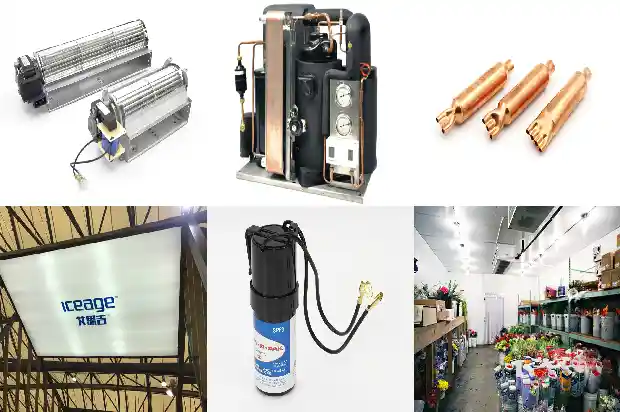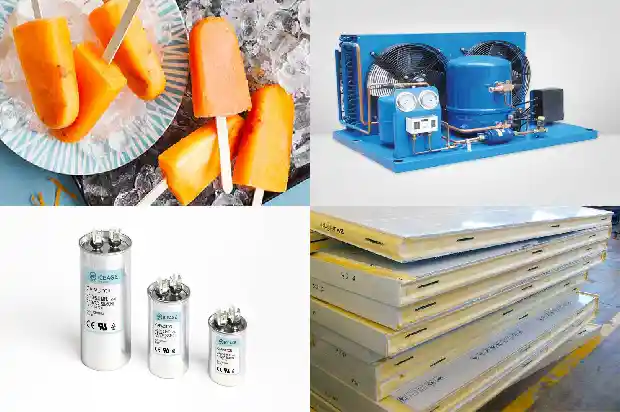Defrosting Heating Tubes in Refrigeration Devices
2025-02-25
When refrigeration devices such as cold storage air coolers and frozen & refrigerated display cabinets are in use, frost may form on the surface of the evaporator. Since the frost layer can narrow the flow channels, reduce the air volume, and even completely block the evaporator, seriously hindering the air flow. If the frost layer is too thick, it will deteriorate the cooling effect of the refrigeration device, increase power consumption. Therefore, some refrigeration devices use electric defrosting to defrost regularly.

Electric defrosting uses the electric heating tubes arranged inside the equipment to heat the frost layer adhering to the surface of the equipment, melting it to achieve the purpose of defrosting. This kind of electric heating tube belongs to one type of metal tubular electric heating elements, also known as defrosting heating tubes or frost - melting heating tubes. The electric heating tube takes a metal tube as the outer shell, an alloy electric heating wire as the heating element, has lead rods (wires) at one or both ends, and fills the metal tube with dense magnesium oxide powder insulation medium to fix the heating element.
Due to the characteristics of high indoor humidity, low temperature, and frequent thermal shock when the freezing equipment is working, the defrosting heating tube is generally based on the tubular electric heating element.
(1) There are lead rods at both ends, and each end is connected to the outer shell.
(2) The leads are at both ends, with one end connected to the outer shell.
(3) Two lead rods are led out from one end, and the two lead rods are parallel.
(4) One end is led out, the lead rod is coaxial, and a part of the tail at the other end does not generate heat.

(1) There are lead rods at both ends, and each end is connected to the outer shell.
(2) The leads are at both ends, with one end connected to the outer shell.
(3) Two lead rods are led out from one end, and the two lead rods are parallel.
(4) One end is led out, the lead rod is coaxial, and a part of the tail at the other end does not generate heat.
Among them:
a) Lead rods (wires): They are metal conductive parts connected to the heating element for connecting the element to the power supply and connecting elements to each other.
b) Outer shell tube material: Generally 304 stainless steel, which has good corrosion resistance.
c) Internal heating wire: Nickel - chromium alloy resistance wire, or iron - chromium - aluminum wire.
d) The port of the electric heating tube is sealed with vulcanized rubber.
a) Lead rods (wires): They are metal conductive parts connected to the heating element for connecting the element to the power supply and connecting elements to each other.
b) Outer shell tube material: Generally 304 stainless steel, which has good corrosion resistance.
c) Internal heating wire: Nickel - chromium alloy resistance wire, or iron - chromium - aluminum wire.
d) The port of the electric heating tube is sealed with vulcanized rubber.
Regarding the connection of the heating tubes, if the connection method of the defrosting electric heating tube is marked with Y, it is a star connection, and Y must be connected to the neutral line. If not marked, it is a Δ delta connection. For example, the heating tubes of the air cooler are generally 220V. One end of each heating tube is connected to the live wire, and the other ends are connected together to the neutral wire.

The method of electric defrosting has a simple system and is more convenient to operate. However, the power of the defrosting electric heating tube is generally large. If the quality of the heating tube is poor or it has been used for a long time, it is likely to burn out and even cause a fire. Therefore, the method of electric defrosting has serious potential safety hazards and requires regular inspections. The common damages of electric heating tubes are as follows:
- Judging from the appearance, phenomena such as damage to the lead rods, damage to the metal surface coating, breakage of the insulator, or sealing failure can be observed.
- The physical and chemical properties of the heating tube change and cannot meet the usage requirements. For example, if any of the following situations occur, it can no longer be used:
① The withstand voltage of the heating tube is lower than the standard value, the leakage current value is greater than 5mA, or the insulation resistance value is lower than 1MΩ and cannot be restored.
② There is flame emission and molten matter on the outer shell, the surface is severely corroded, or other situations that do not allow repair.
③ The actual power of the heating tube has a deviation of ±10% from the rated power.
④ The shape of the heating tube has changed severely, resulting in a significant uneven thickness of the insulation layer. After measurement, the insulation performance is significantly reduced and does not meet the relevant standard regulations.
Related Articles
- Essential for Maintenance! Parameters and Phenomena of Normal Operation of Refrigeration and Heating Systems
- 9 Heating and Cooling Solutions: Pros and Cons You Must Know!
- What are the Cooling and Heating Pressures of an Air Conditioner? How to Calculate the Optimal Refrigerant Quantity?
- What Key Steps Should Not Be Ignored in Installing an Air - source Heat Pump Heating System?
- Is the heating effect of air source heat pump air conditioner with enhanced vapor injection really good under low temperature conditions?
- Air-source heat pump: Principle of cooling and heating in one machine
- How to Install the Purple Copper Tubes Special for Air Conditioners
- Refrigeration Components of Refrigeration
- Refrigeration System: Copper Pipe Welding and Flushing Operations
- Have You Encountered the Three Common Problems of Refrigeration Compressors?
- How to Calculate Refrigeration Load? And What Are the Issues?
- What to Do if the Compressor of a Frozen and Refrigerated Display Cabinet Runs but the Refrigeration Effect Is Poor?
- Instructions for Welding and Drainage in the Installation of Refrigeration Equipment Pipelines
- Common Pressure Valves and Protection Devices in Refrigeration Units
- Precautions for Using Rotary Refrigeration Compressors
- What Misconceptions Should Be Avoided in Low - temperature Refrigeration System Repairs
- Composition and Common Faults of Screw Refrigeration Compressors
- How to Read the High - and Low - Pressure Gauges of Refrigeration Air - conditioners?
